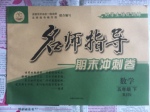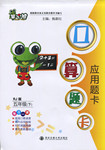题目内容
____ the flight to New York will be delayed is _____ I’m especially worried about.
A.When; what B.Whether; that
C.When; that D.Whether; what
练习册系列答案
 名师指导期末冲刺卷系列答案
名师指导期末冲刺卷系列答案 开心蛙口算题卡系列答案
开心蛙口算题卡系列答案
相关题目
题目内容
____ the flight to New York will be delayed is _____ I’m especially worried about.
A.When; what B.Whether; that
C.When; that D.Whether; what
 名师指导期末冲刺卷系列答案
名师指导期末冲刺卷系列答案 开心蛙口算题卡系列答案
开心蛙口算题卡系列答案